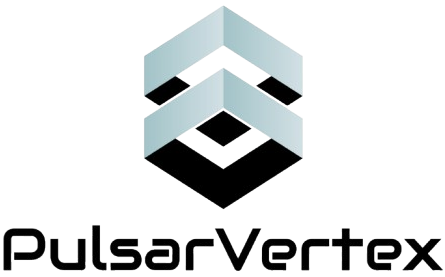Table of Contents
Toggle1. Why Perimeter Detection Is Critical for Solar Infrastructure
Perimeter intrusion detection is the first and most important line of defense in any solar farm security strategy. These sites are often spread across vast rural areas with minimal staffing, making them susceptible to theft, vandalism, and even sabotage.
A robust detection system ensures that any breach or suspicious movement is identified instantly, allowing remote operators or on-site responders to act before critical infrastructure is compromised.
2. Challenges in Securing Large-Scale Solar Sites
Securing perimeter lines for a solar farm involves unique complexities:
-
Extensive, open perimeters (often over 100 acres)
-
Unlit or poorly illuminated terrain
-
Environmental interference (fog, wildlife, wind)
-
Public rights of way nearby or bordering land usage conflicts
-
Infrastructure spread across uneven terrain or sloped ground
These conditions demand more than just cameras or passive fencing—they require a dynamic, intelligent system designed for constant adaptation.
3. Thermal Imaging: The Gold Standard in Low-Light Detection
Thermal cameras remain an essential part of modern perimeter security due to their ability to detect heat signatures regardless of visibility conditions.
Benefits:
-
Detects human presence up to 600m away
-
Works in total darkness, fog, or foliage
-
Can’t be blinded by bright lights or environmental clutter
-
Enables early detection long before visual confirmation is possible
Thermal imaging should be used in combination with visible-light CCTV to provide both real-time alerts and forensic evidence.
4. Radar-Based Detection Systems: Wide-Area Intrusion Sensing

Ground-based radar systems use radio waves to detect motion and determine the speed, direction, and distance of intruders.
Key Features:
-
Covers up to 1 km with a single sensor
-
Tracks multiple objects simultaneously
-
Immune to weather conditions and poor lighting
-
Ideal for wide-open sites or critical zones like inverter fields
Radar systems can auto-cue nearby PTZ cameras to track targets, significantly enhancing response capability.
SEO Focus: radar detection for solar farms, wide-area security sensors.
5. LiDAR Technology: Precision Mapping and Object Tracking
LiDAR (Light Detection and Ranging) uses lasers to build 3D maps of a site in real-time. It can detect slight changes in terrain or movement at a granular level.
Advantages:
-
Ultra-precise object recognition
-
Creates virtual tripwires or zone-based alerts
-
Effective in cluttered or structured environments (urban solar or agrovoltaic arrays)
-
Seamlessly integrates with VMS and AI software
Though newer and more expensive, LiDAR is gaining traction in high-security renewable projects due to its precision and scalability.
6. Microwave and Infrared Barrier Systems
Microwave and infrared (IR) barriers create invisible walls that detect movement across a defined perimeter.
Microwave Systems:
-
Use pulsed radar waves between two fixed units
-
Immune to changes in ambient light
-
Effective across uneven terrain and vegetated areas
Infrared Systems:
-
Active IR beams detect beam breaks
-
Often used in layered systems or near access gates
-
Prone to interference but cost-effective when placed correctly
Both systems provide reliable intrusion detection when combined with visual confirmation methods.
7. AI-Powered Video Analytics: Intelligent Surveillance at Scale
AI video analytics turns basic cameras into smart detection nodes by interpreting pixel-level motion and behaviour.
Capabilities:
-
Differentiates between human, vehicle, animal, or wind-blown movement
-
Identifies line-crossing, loitering, or object removal
-
Triggers alerts only for real threats, cutting false positives by up to 90%
-
Learns from environmental patterns over time (machine learning)
When integrated with monitored CCTV for solar farms, these analytics allow faster and more accurate response.
8. Integrated Multi-Layered Detection: Designing a Secure Perimeter
The most effective solar farm perimeter security systems rely on layered detection, combining technologies for redundancy and comprehensive coverage.
Sample Layered Architecture:
-
Outer perimeter: Radar + fence-mounted sensors
-
Mid-zone: Thermal and optical CCTV + AI analytics
-
Critical zones: Microwave barriers and LiDAR
-
Access control: LPR cameras and biometric gates
-
Remote monitoring: 24/7 central station with NSI Gold certification
This approach ensures there’s no single point of failure, and that alerts are verified in seconds.
9. Real-World Applications and Case Studies
At Pulsar Vertex, we recently secured a 72-acre solar site on private farmland in Norfolk.
Security Infrastructure Deployed:
-
Long-range thermal cameras with line-crossing detection
-
Fence vibration sensors with radar triangulation
-
Radar cueing PTZ for intruder tracking
-
Biometric access for control units and substations
-
Integration with 24/7 monitoring station and mobile patrol service
Within weeks, the site saw an 89% reduction in false alarms and zero intrusion attempts following deployment.
10. Compliance, Cybersecurity, and Remote Monitoring Integration
Every detection system must meet UK and EU standards for data security and insurance compliance.
Requirements:
-
BS EN 50131 / BS EN 62676 – Intruder and CCTV compliance
-
Cyber Essentials Plus – Protects data from camera systems, cloud-based monitoring
-
NSI Gold / SSAIB – Required for alarm response and police support
-
GDPR – Retention periods, video access policies, and user privacy
Pulsar Vertex systems come pre-configured for fully secure remote access and audit trail logging — essential for operations and insurance validation.
11. Conclusion & Strategic Recommendation
The future of solar farm perimeter detection is not just about one technology — it’s about the right combination of smart, scalable systems that adapt to your site’s risks, budget, and compliance needs.
Whether it’s a radar-backed wide perimeter or a LiDAR-monitored inverter zone, your security system must provide real-time detection, minimal false alerts, and instant response capability.
📧 Want a site-specific detection design? Email us at info@pulsarvertex.com
📞 Or speak to one of our engineers via the landline listed at www.pulsarvertex.com
Let Pulsar Vertex engineer your solar farm’s perimeter defense — from the ground up.

